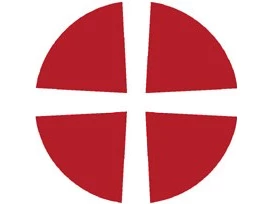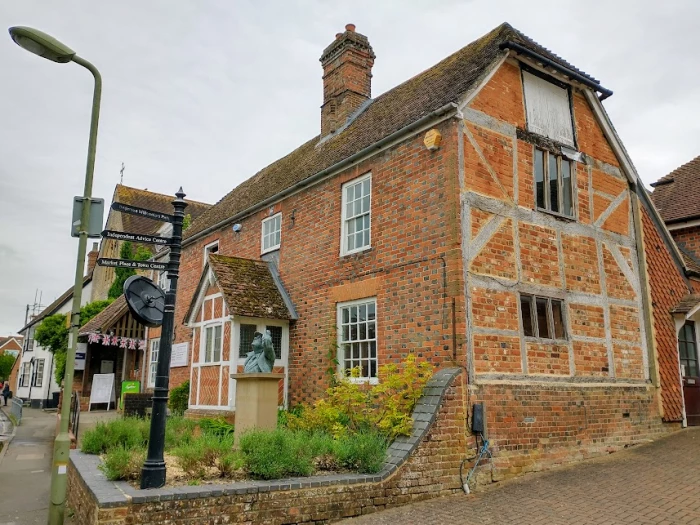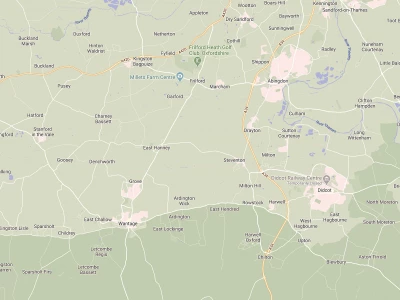Vale and Downland Museum
Vale and Downland Museum
Recorded by Olive Price
The track can be heard here: Vale and Downland Museum
More information about the museum can be found here: Vale & Downland Museum
The text is as follows:
The Vale and Downland Museum. My name is Olive Price, and I've been volunteering in the Vale and Downland Museum since the 1960s. I'm going to tell you a little bit about its history and what makes it so special.
The story of the old building, the old surgery building originally part of the medieval Manor of Priorshold, the plot of land and the house known as the old surgery was leased to Wantage tradesmen after the disillusion of the monasteries in 1538. The original building dates from the late C1600s. This was entirely timber framed post and trust designed with box frames and wall panels and a thatch roof. Archives of the Dean and Chapter of Windsor now know that it was let to Alexander Doe in 1662, and then to William Hazel, a wheelwright in 1683. Presumably a descendant Lawrence Hazel was in possession of the property in 1780.
Lawrence Hazel was a cloth worker and was responsible for the major rebuilding of the house in 1780, adapting it for his cloth dying business. He is commemorated by the date stone bearing his initials over the central first storey window. The ghost of the old building can be seen at the far end. He removed the timber framed front and the roof making it four foot higher and replaced the facade with sash windows and brickwork, which had become the more popular building material of the period. He used stylish blue glazed headers in Flemish bond, which formed a dappled pattern.
This new facade was not part of the crosswalks of the building. So it was bolted back into the structure of the house with S and X brackets on the outside of the wall. With the extra height, Lawrence Hazel now had the loft space for storing his bales of cloth. These were hauled up from wagons in the side yard, through the loft door. Part of the wooden hoist survives in the loft. From the middle C1800s, the building was used as a doctor's surgery. The central room downstairs was the waiting room, which was often very crowded in winter evenings. In the early 1970s, the surgery moved to a new health centre and the property was bought by the district council.
Now, the story of the museum. The idea of a museum for Wantage began in 1958, when Miss Kathleen Phillip, a well known local figure and historian produced a copy of an 18th Century document, which was being used as a door stop for safe keeping by the town. The urban district council made an appeal for objects to form a town collection. The response was so positive that a subcommittee was created with Mary Whipple as its chairperson. She remained an active member of the management committee until her death in 1992.
In the 1960s, the growing collection was housed in the Pacific Hall, which was then the Victoria Cross Gallery in marketplace. This is where my interest began when I was asked if I would like to come and help. The room where some of the objects were housed was very small with just a few glass cases to display a small collection. I continued for some time working at the civic hall, but due to family commitments had to stop. In 1972, the Vale and Downland Museum Trust was formed. The trust persuaded the Vale of White Horse District Council, newly formed in 1974, to buy the old surgery building and lease it to the museum trust. I, once again, rejoined the museum as a helper and worked for a few years in the kitchen, serving teas and cake when Anne Woods was the cook and some lovely dishes were being offered, which also helped to attract people to the museum.
Work began in June, 1977. There followed eight years of hard work led by Dr. Dick Squires and the loyal team of volunteers. Work was undertaken in three phases. The first was to create a new entrance to the side and the extension to house the cafe and the toilets. The second phase involved the rear erection of a timber framed barn to create a wing of galleries. And finally the re-election of a 17th Century barn from Hendred, to complete the gallery space. At this time, my husband John was working at the museum. So I decided to change and help him and several other people to sort out the existing number of objects.
This work was in the old cottage next door, where we all sorted and cataloged items for display display in the future. One thing I must say, it was a very cold place to work during the winter. Because of this, I even took this home and, and type them in comfort. The museum was officially opened by the Dutchess of Devonshire on 29th September 1983. In 1999, a major refurbishment of the galleries was carried out with the aid of an award from the heritage lottery fund. In 2012, an extension was built to accommodate the cafe kitchen, office and collection store. When the final alterations were finished, you had a whole room set aside for cataloging and photographing items. By this time, it had become a real luxury.
The museum collection now contains over 8,000 objects, photographs, and documents. We continue to collect, and we are grateful for the kind donations of items by individuals and the financial support of the friends of the Vale and Downland Museum.


